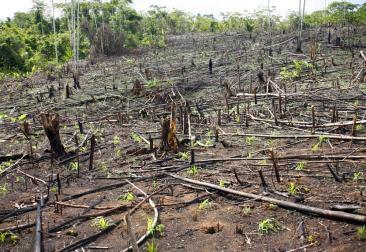THE Amazon rainforest it is the largest forest in Brazil, occupying practically half of the Brazilian territory, in addition to occupying the territory of nine other countries. It is considered the most important tropical forest in the world due to its diversity and its role in the climate, acting in the process of controlling temperatures. Its total area exceeds five million km².
THE Amazon is nicknamed "lung of the world” thanks to the oxygen it produces, but this statement is wrong for two reasons:
a) a lung breathes oxygen and emits carbon dioxide, and the forest does exactly the opposite;
b) the oxygen released by the forest is used for the survival of its own biodiversity.
This forest is characterized by being very heterogeneous, that is, it has a very varied amount of plant species. It is also characterized by being of the perennial (the leaves of the trees do not dry out) and their vegetation is very close to each other.
In animal species, the Amazon Forest has more than 470 mammals, 1,800 birds, 3,000 fish, among many other species of insects and reptiles. Many of these animals are endemic, that is, they only exist in this region and are at risk of extinction if it is destroyed.
The predominant climate is the Humid Equatorial, with an annual average temperature of around 24ºC and a high rate of rainfall (2,500 millimeters per year, one of the highest in the world).
There is a countless amount of water in the Amazon. It contains the largest hydrographic basin in the world – the Amazon Basin – which is responsible for 20% of the water flow of all rivers on Earth.
Unfortunately, predatory deforestation and the growth in the practice of mining have contributed to the devastation of the forest. Some scholars point out that nearly 20% of the Amazon's original vegetation has already been destroyed.

The devastation of the Amazon Forest has been advancing relentlessly
By Rodolfo Alves Pena
Graduated in Geography


